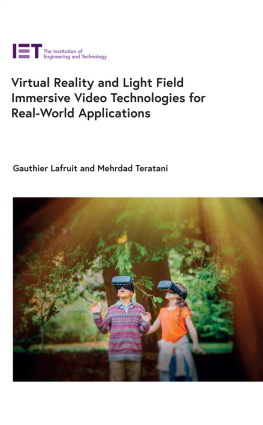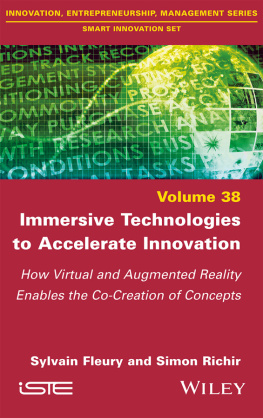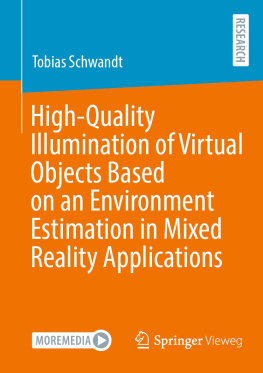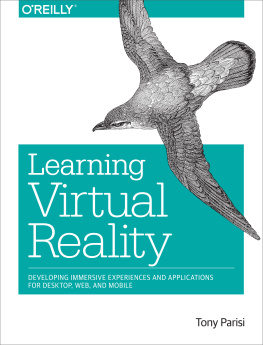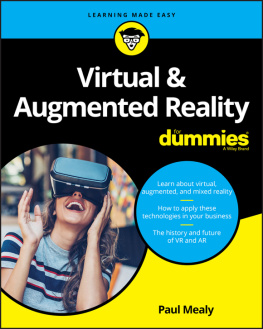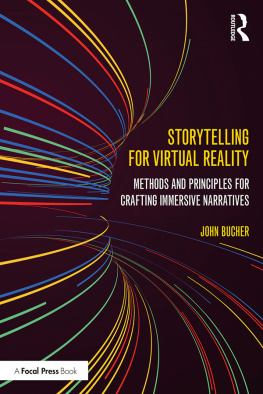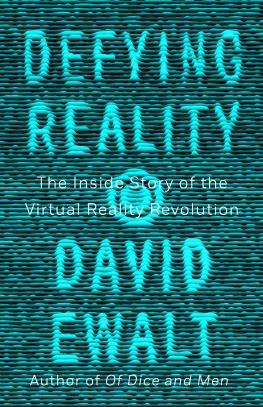Contents
IET COMPUTING SERIES 21
Virtual Reality and Light Field Immersive Video Technologies for Real-World Applications
Virtual Reality and Light Field Immersive Video Technologies for Real-World Applications
Gauthier Lafruit and Mehrdad Teratani
The Institution of Engineering and Technology
Published by The Institution of Engineering and Technology, London, United Kingdom
The Institution of Engineering and Technology is registered as a Charity in England & Wales (no. 211014) and Scotland (no. SC038698).
The Institution of Engineering and Technology 2022
First published 2021
This publication is copyright under the Berne Convention and the Universal Copyright Convention. All rights reserved. Apart from any fair dealing for the purposes of research or private study, or criticism or review, as permitted under the Copyright, Designs and Patents Act 1988, this publication may be reproduced, stored or transmitted, in any form or by any means, only with the prior permission in writing of the publishers, or in the case of reprographic reproduction in accordance with the terms of licences issued by the Copyright Licensing Agency. Enquiries concerning reproduction outside those terms should be sent to the publisher at the undermentioned address:
The Institution of Engineering and Technology
Michael Faraday House
Six Hills Way, Stevenage
Herts, SG1 2AY
United Kingdom
www.theiet.org
While the authors and publisher believe that the information and guidance given in this work are correct, all parties must rely upon their own skill and judgement when making use of them. Neither the authors nor publisher assumes any liability to anyone for any loss or damage caused by any error or omission in the work, whether such an error or omission is the result of negligence or any other cause. Any and all such liability is disclaimed.
The moral rights of the authors to be identified as authors of this work have been asserted by them in accordance with the Copyright, Designs and Patents Act 1988.
British Library Cataloguing in Publication Data
A catalogue record for this product is available from the British Library
ISBN 978-1-78561-578-8 (hardback)
ISBN 978-1-78561-579-5 (PDF)
Typeset in India by MPS Limited
Printed in the UK by CPI Group (UK) Ltd, Croydon
Other volumes in this series:
| Volume 1 | Knowledge Discovery and Data Mining M.A. Bramer (Editor) |
| Volume 3 | Troubled IT Projects: Prevention and turnaround J.M. Smith |
| Volume 4 | UML for Systems Engineering: Watching the wheels, 2nd Edition J. Holt |
| Volume 5 | Intelligent Distributed Video Surveillance Systems S.A. Velastin and P. Remagnino (Editors) |
| Volume 6 | Trusted Computing C. Mitchell (Editor) |
| Volume 7 | SysML for Systems Engineering J. Holt and S. Perry |
| Volume 8 | Modelling Enterprise Architectures J. Holt and S. Perry |
| Volume 9 | Model-Based Requirements Engineering J. Holt, S. Perry and M. Bownsword |
| Volume 13 | Trusted Platform Modules: Why, when and how to use them Ariel Segall |
| Volume 14 | Foundations for Model-based Systems Engineering: From Patterns to Models J. Holt, S. Perry and M. Bownsword |
| Volume 15 | Big Data and Software Defined Networks J. Taheri (Editor) |
| Volume 18 | Modeling and Simulation of Complex Communication M.A. Niazi (Editor) |
| Volume 20 | SysML for Systems Engineering: A model-based approach, 3rd Edition J. Holt and S. Perry |
| Volume 23 | Data as Infrastructure for Smart Cities L. Suzuki and A. Finkelstein |
| Volume 24 | Ultrascale Computing Systems J. Carretero, E. Jeannot and A. Zomaya |
| Volume 25 | Big Data-Enabled Internet of Things M. Khan, S. Khan, A. Zomaya (Editors) |
| Volume 26 | Handbook of Mathematical Models for Languages and Computation A. Meduna, P. Horek, and M. Tomko |
| Volume 29 | Blockchains for Network Security: Principles, technologies and applications H. Huang, L. Wang, Y. Wu, and K.R. Choo (Editors) |
| Volume 32 | Network Classification for Traffic Management: Anomaly detection, feature selection, clustering and classification Zahir Tari, Adil Fahad, Abdulmohsen Almalawi and Xun Yi |
| Volume 33 | Edge Computing: Models, technologies and applications J. Taheri and S. Deng (Editors) |
| Volume 34 | AI for Emerging Verticals: Humanrobot computing, sensing and networking M.Z. Shakir and N. Ramzan (Editors) |
| Volume 35 | Big Data Recommender Systems Vols 1 and 2 Osman Khalid, Samee U. Khan, and Albert Y. Zomaya (Editors) |
| Volume 37 | Handbook of Big Data Analytics Vols 1 and 2 Vadlamani Ravi and Aswani Kumar Cherukuri (Editors) |
| Volume 39 | ReRAM-based Machine Learning Hao Yu, Leibin Ni and Sai Manoj Pudukotai Dinakarrao |
| Volume 40 | E-learning Methodologies: Fundamentals, technologies and applications M. Goyal, R. Krishnamurthi and D. Yadav (Editors) |
About the authors
Gauthier Lafruit is Professor Multimedia, with a research focus on Virtual Reality and Light Field technologies at Universit Libre de Bruxelles (ULB), the French wing of Brussels University, Belgium. He received his Master and PhD degrees in Electromechanical Engineering with a speciality in Electronics from the Vrije Universiteit Brussel (VUB), the Flemish wing of Brussels University, in 1989 and 1995, respectively. He has worked for 25 years in the domain of visual data analysis and compression, participating to compression standardisation committees such as CCSDS (space applications), JPEG (still picture coding) and MPEG (moving picture coding). In 2014, he joined the LISA department of ULB, Laboratory of Image Synthesis and Analysis, with a research focus on image synthesis techniques for six degrees of freedom virtual reality using real content, like in the movie Dj-Vu where highly realistic viewpoints to a scene can be rendered without ever having captured them. This includes depth image-based rendering, immersive video and point cloud technologies. From 2014 to 2016, he was co-chair of the FTV (Free viewpoint TV) working group in the international MPEG standardisation committee. In 2018, LISA's Virtual Reality research unit (LISA-VR) has actively contributed to part of the MPEG reference software for immersive experiences that will be published by Q1-2022 as the MIV standard: MPEG Immersive Video. Professor Lafruit teaches 3D graphics and virtual/augmented reality with OpenGL, as well as imaging courses with GPU programming in CUDA.
Mehrdad Teratani is Professor of Light Field Video Engineering at the Laboratory of Image Synthesis and Analysis (LISA), Universit Libre de Bruxelles, Belgium. He was previously an Associate Professor at the Department of Information and Communication Engineering, Nagoya University, Japan, where he also received his PhD degree in Information Electronics, in 2004. His research interests include 3D imaging systems with a focus on 3D image processing and compression, virtual reality, 3D media integration and immersive communication, robotics, intelligent video systems and computer vision. His teaching experience includes digital image processing, visual media compression, signal processing and data analysis. Since 2009, he has been involved in the MPEG standardisation, especially the activities related to immersive video, where he served as a co-chair of the MPEG-I (immersive) Visual Ad Hoc Group from 2019 to 2021 with focus on dense light field activities. Since April 2021, he has been appointed as the chair of the Lenslet Video Coding (LVC) Ad Hoc Group. He holds 16 granted patents on the technologies related to image and video processing.

